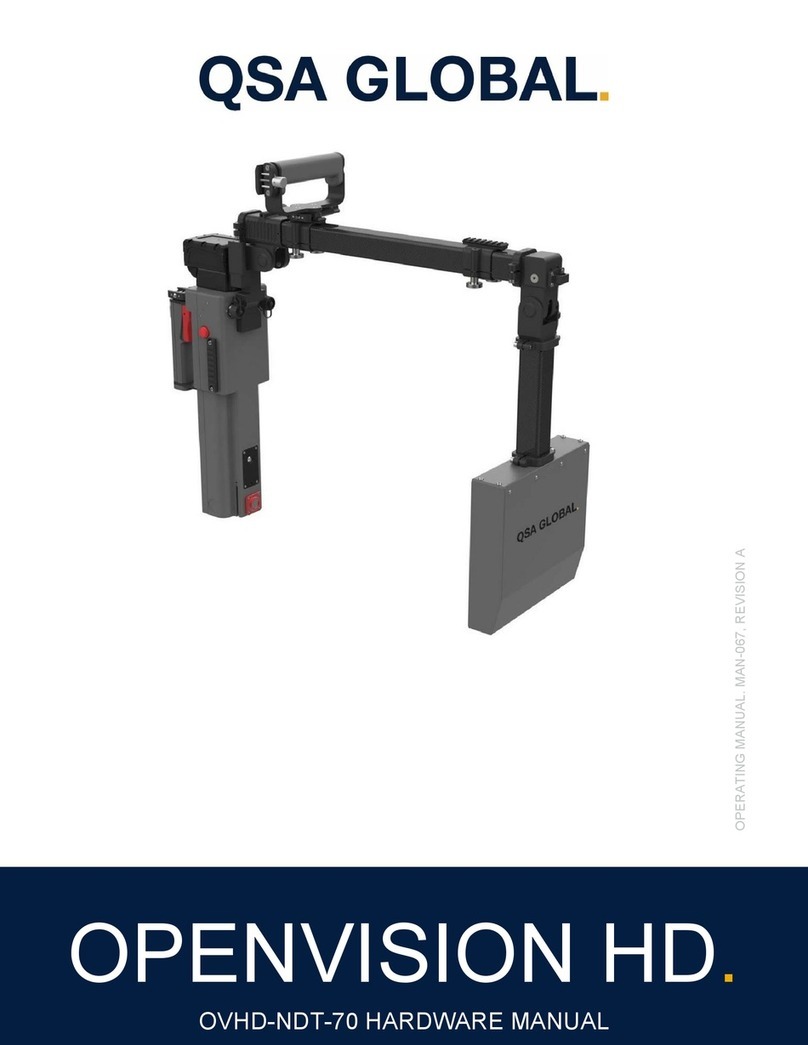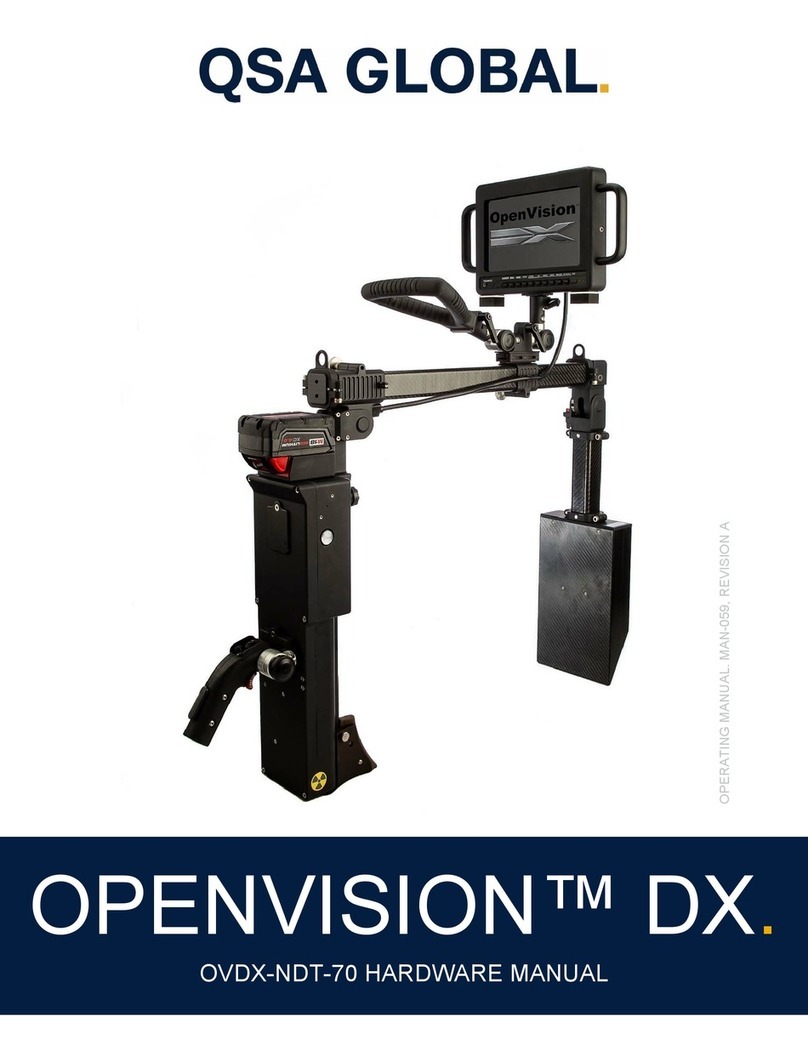
QSA Global, Inc. 40 North Avenue Burlington, MA 01803 888.272.2242 781.272.2000 qsa-global.com
Operations Manual MAN-038 March 2019 Page 10 of 100
1.5 Accessory Equipment Specifications
Table 5 - Complete Remote Control Assemblies
Item number Model Number Control Cable Length Unit Weight
TAN66425 664/25 25 ft (7.6 m) 21 lb (10 kg)
TAN66435 664/35 35 ft (10.7 m) 24 lb (11 kg)
TAN66450 664/50 50 ft (15.2 m) 27 lb (12 kg)
TAN69325 693/25 25 ft (7.6 m) 21 lb (10 kg)
TAN69335 693/35 35 ft (10.7 m) 24 lb (11 kg)
TAN69350 693/50 50 ft (15.2 m) 27 lb (27 kg)
TAN69225 692/25 25 ft (7.6 m) 21 lb (10 kg)
TAN69235 692/35 35 ft (10.7 m) 24 lb (11 kg)
TAN69250 692/50 50 ft (15.2 m) 27 lb (12 kg)
SAN88225 882/25 25 ft (7.6 m) 14 lb (6 kg)
SAN88235 882/35 35 ft (10.7 m) 17 lb (8 kg)
SAN88250 882/50 50 ft (15.2 m) 22 lb (10 kg)
SAN88225R 882/25R 25 ft (7.6 m) 14 lb (6 kg)
SAN88235R 882/35R 35 ft (10.7 m) 17 lb (8 kg)
SAN88250R 882/50R 50 ft (15.2 m) 22 lb (10 kg)
SAN88525 SAN885/25 25 ft (7.6 m) 18 lb (8 kg)
SAN88535 SAN885/35 35 ft (10.7 m) 21 lb (9 kg)
SAN88550 SAN885/50 50 ft (15.2 m) 26 lb (12 kg)
Table 6 - Model 664 and 885 Control Storage Reel Unit Size _____________
Length Width Height
21 in (533 mm) 12 in (305 mm) 6.6 in (168 mm)
The Model 664 reel and Model 693 pistol grip controls are equipped with odometers. The Model 692
pistol grip, Model 882 series and Model 885 reel-type remote controls are not equipped with an odometer.
Table 7 - Source Guide Tube (with source stop)
Item Number Model Number Length
TAN48906 48906 7 ft (2.1 m) male 1-18 threaded fitting
TAN67606 67606 7 ft (2.1 m) large diameter, must use with Model 676 and
SENTINELSENTRY330gamma-ray source projectors.
48906-X 48906-X Customer specified length
48931-7 48931-7 7 ft (2.1 m) with bayonet fitting
48931-X 48931-X Customer specified length with bayonet fitting
95020 95020 7 ft (2.1 m) male 1-18 threaded fitting
*
95020-X 95020-X Customer specified length
*
Table 8 - Source Guide Tube Extension
Item Number Model Number Length
TAN48907 48907 7 ft (2.1 m) male 1-18 threaded fitting
TAN90203 90203 7 ft (2.1 m) large diameter, must use with Model 676 and
SENTINEL SENTRY 330 gamma-ray source projectors.
48930-7 48930-7 7 ft (2.1 m) bayonet fitting/female 1-18
48930-X 48930-X Customer specified length bayonet fitting/female 1-18
95021 95021 7 ft (2.1 m) male/female 1-18 threaded fittings
*
95021-X 95021-X Customer specified length
*
NOTE:
Xindicates customer can order lengths other than the standard length.
*
Indicates source guide tube material for extreme condition use.

































